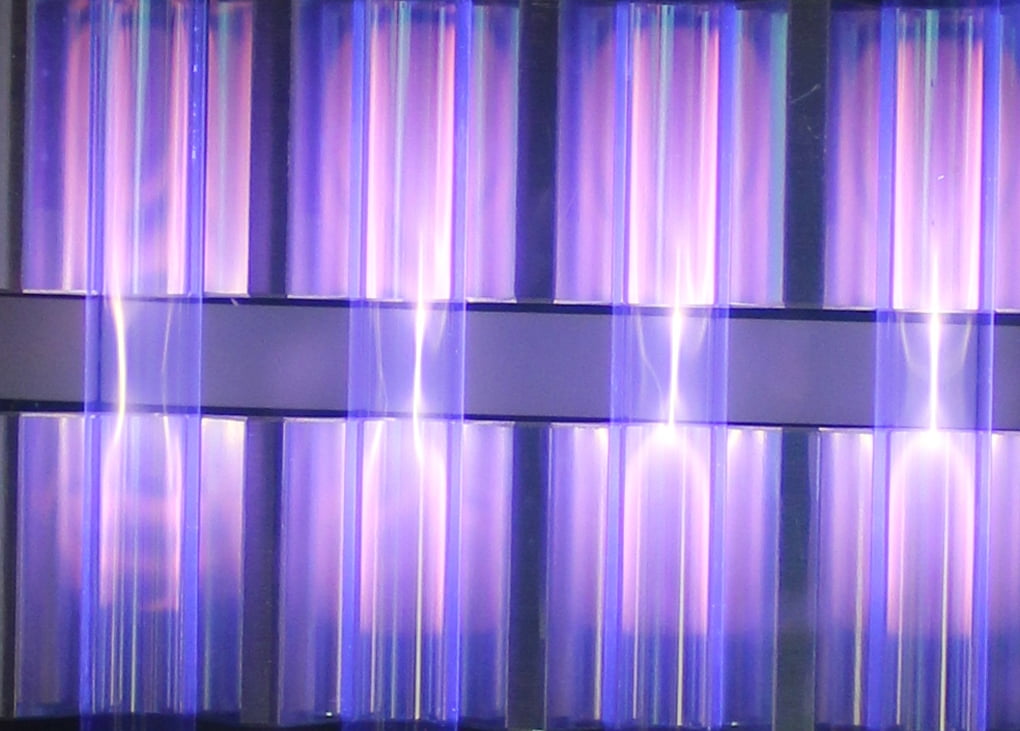New research has highlighted the effectiveness of a specific wavelength of UV light in limiting the spread of COVID-19 without harming humans.
According to the team at University of Colorado Boulder, the study is the first to comprehensively analyse the effects of different wavelengths of UV light on SARS-CoV-2 and other respiratory viruses. Researchers also say they discovered the “sweet spot” between UV light that is relatively safe for humans and harmful for viruses, especially the one that causes COVID-19.
The light at the end of the COVID-19 tunnel?
Since the beginning of the pandemic, there has been renewed interest in UV light. It has long been established in water treatment, and has also been shown to effectively inactivate airborne microbes that transmit tuberculosis, measles, and SARS-CoV-1, a close relative of the current SARS-CoV-2 coronavirus.
But opportunities to conduct tests on SARS-CoV-2 have been rare due to the rigorous safety precautions required. For the new research, the group collaborated with virologist Charles Gerba at the University of Arizona, at a lab cleared to work with the virus and its variants.
For the study, senior author Karl Linden and his team compared different UV wavelengths side by side, using standardised methods developed across the UV light industry.
“We thought, let’s come together and make a definitive statement on what UV exposure is required to kill off SARS-CoV-2,” says Linden. “We wanted to make sure that if UV light is being used to control disease, you’re delivering the right dose that’s protective of human health and human skin, but also going to be killing off these pathogens.”
The researchers found that while the virus was quite susceptible to UV light in general, a specific wavelength of Far ultraviolet-C, at 222nm, was particularly effective. Created by what’s known as a krypton chloride excimer lamp, fuelled by molecules moving between different states of energy, this wavelength is very high energy. Therefore, it’s able to inflict greater viral protein and nucleic acid damage to the virus compared to other UV-C devices, as well as be blocked by the very top layers of human skin and eyes – meaning that it has limited detrimental health effects at doses that are capable of killing off viruses.
“This can be a game-changer for the public use of UV light in indoor spaces,” says Linden.
“Not only is it safe, it’s also the most effective. There is an opportunity here to save money and energy while protecting public health in the same way.”
Not everyone is on the same wavelength
UV radiation between 200 and 280nm – the UV-C spectrum – has been widely employed as the germicidal range of UV radiation. Over the UV-C range, intercellular components such as RNA, DNA, and proteins can sensitively absorb UV-C photons, causing critical damage to the genomic system of microorganisms and preventing them from replicating – or “inactivating” them.
But among UV experts, the jury is still out on the ideal wavelength, even despite the latest study.
Doctor Normand Brais, Vice-President – Engineering and founder of Sanuvox, has been working with UV for more than 35 years, and urges caution around claims that 222nm is “safe”.
“Just like any other UV wavelength, there is an exposure limit for humans at 222nm,” says Dr Brais. “The limit for 254nm wavelength has been established at 6mJ/cm2, and current data suggest that 25mJ/cm2 would be the maximum for 222nm. What can be said is that 222nm UV is relatively safer than 254nm, since for the same intensity (mW/cm2), allowable exposure time can be about four times longer. Allowing exposure to UV at 254nm for 10 seconds or for 40 seconds at 222nm does not make much difference from a safety perspective when a room is occupied.”
In terms of effectiveness, Dr Brais points to published research that shows peak effectiveness around 265nm for most microorganisms, rather than 222nm.
Another issue Dr Brais flags is the potential for systems to produce ozone at some wavelengths.
“Any wavelength below 240nm carries enough energy to break up oxygen molecules and consequently generate ozone,” says Dr Brais. “Ozone is a highly regulated pollutant inside buildings. In confined spaces, ozone generated by a 222nm UV disinfection device will accumulate and could potentially exceed safe limits. The 254nm wavelength does not generate ozone at all.”
A final factor may be higher cost. Dr Brais says krypton chloride excimer lamps required to emit 222nm UV are about 10 times more expensive per Watt and have a lower lifespan (3,000 hours versus 17,000 hours) than 254nm UV sources.
To read more about the University of Colorado Boulder report, click here.
Image: A krypton chloride excimer lamp (Ben Ma, Linden Research Group)
 Mark Vender
Mark Vender


Leave a Reply